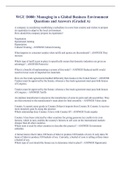Summary
Extensive summary of all the articles/lectures/slides of the Theories of Marketing course
- Course
- Institution
This extensive summary of all the articles/lectures/slides of the Theories of Marketing course will provide you all the information needed to brilliantly pass your exam. I got 9
[Show more]












